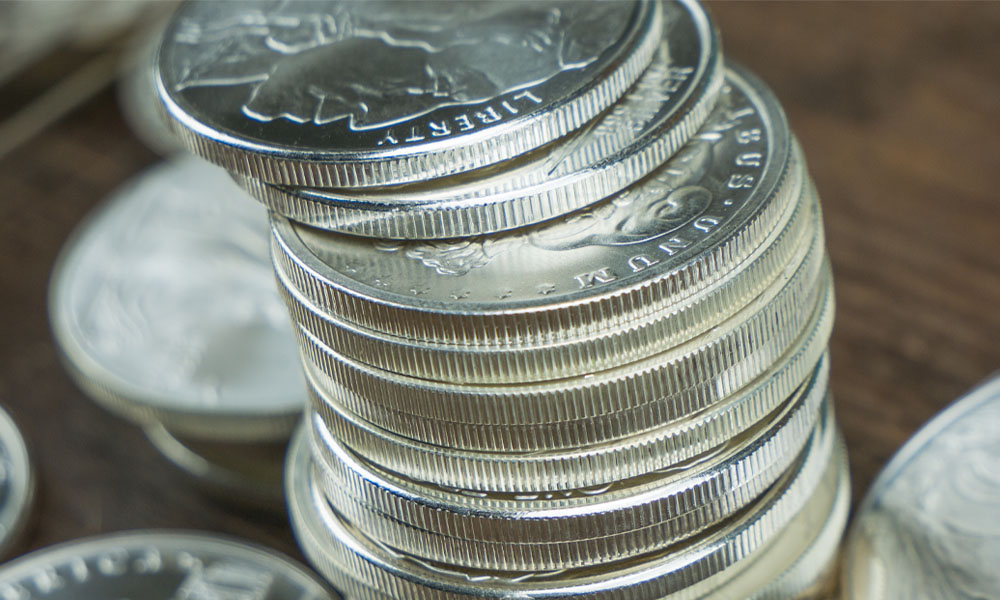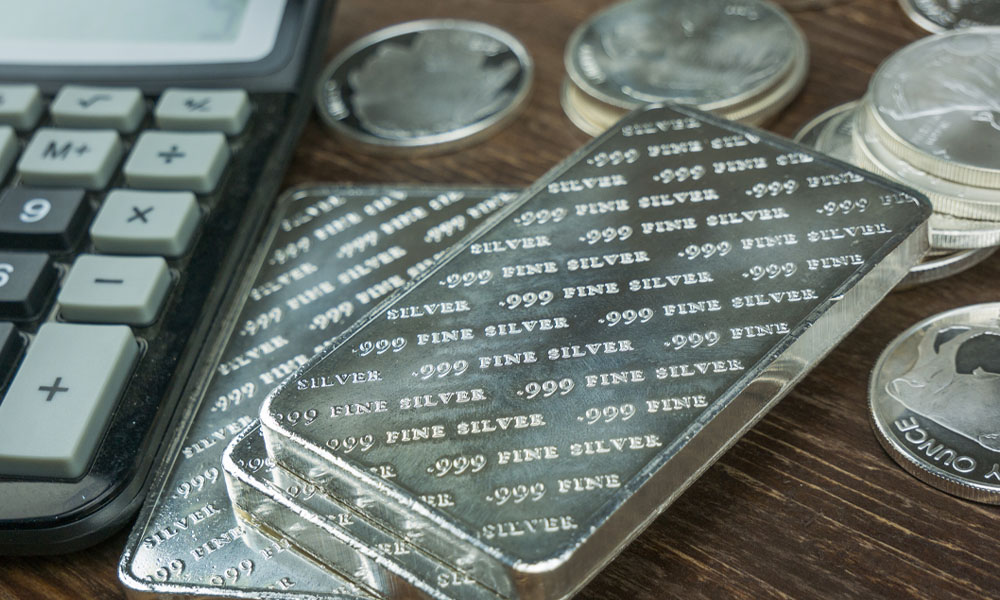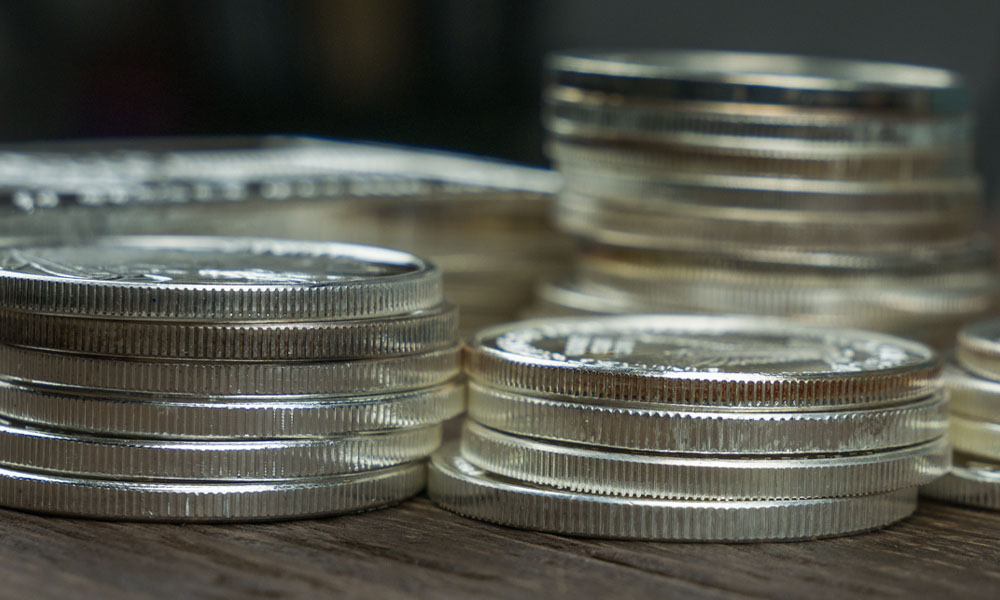In today's volatile economic landscape, investors continuously seek stable and tangible assets to diversify their portfolios and safeguard their wealth against financial chaos and currency inflation. Silver bullion, known for its enduring value and versatility, emerges as a compelling choice for many individuals. This guide delves into the world of silver stacking and hopes to instill confidence in those navigating the precious metals market.
As we embark on this journey, we will explore the foundational aspects of acquiring silver bullion, from understanding its value to choosing the correct form of silver for your investing needs. We will also discuss essential tips on purchasing silver safely and efficiently, avoiding common pitfalls that can detract from the stacking experience. Finally, we will address the critical aspect of liquidating your holdings, offering insights into selling best practices.
Whether new to precious metals or looking to refine your silver stacking strategy, this guide will equip you with the knowledge and tools needed to build and maintain a valuable silver stack. Join us as we uncover the secrets to building wealth, one ounce at a time.
Let's get started!
The Allure of Silver Stacking
As an alternative investment asset, silver occupies a unique position as both a monetary metal historically and an industrial commodity in modern times. Silver coinage was an effective medium of exchange and store of value for centuries, which is why today many retail investors allocate a portion of their savings to the lustrous, shiny metal. "Silver stacking," the practice of accumulating physical silver bullion in various forms like coins, bars, and rounds, has gained popularity over the past several years as a strategic approach to wealth building. But what makes silver stacking so appealing to investors?
Tangible Asset: Unlike stocks or digital currencies, silver bullion is a physical asset you can hold in your hands. This tangibility provides a sense of security and satisfaction to the holder, knowing that your investment has a real-world presence. In times of economic uncertainty, the appeal of tangible assets like silver bullion becomes even more pronounced, as they offer a hedge against inflation and currency devaluation.
Accessibility and Affordability: Silver is more accessible and affordable than gold, making it an attractive option for people of all backgrounds. This lower entry barrier allows individuals to start small and gradually build their silver holdings over time. The ability to physically own a valuable commodity without a significant initial investment democratizes the process of wealth accumulation, opening the doors to a wider audience.
Diversification: Acquiring silver can diversify an investment portfolio, reducing risk by spreading exposure across different asset classes. Silver's price movements are generally uncorrelated with other assets like stocks or bonds, providing a buffer against market volatility. This diversification benefit is a key aspect of silver's appeal, as it helps stabilize the value of an investment portfolio.
Industrial Demand: Silver's extensive use in various industries, from electronics to solar panels, underpins its value beyond its status as a precious metal. This industrial demand ensures a baseline level of consumption that is supportive of silver prices, offering growth potential based on industrial use.
Community and Culture: Silver stacking is more than just an wealth accumulation strategy; it is stepping into a community of like-minded individuals. Stackers often share their experiences and strategies, inspiring others and fostering a sense of camaraderie. This community aspect can be incredibly rewarding, providing a network of support and knowledge that adds to the journey.
In summary, the allure of silver stacking lies in its unique combination of tangibility, accessibility, diversification benefits, industrial demand, and the supportive community surrounding it. These factors together make silver stacking a compelling strategy for those looking to build and preserve wealth in a tangible form. As we explore the intricacies of buying silver, consider these foundational appeals that make silver an asset worth considering for your investment portfolio.

Understanding Silver Value
The value of silver is influenced by a complex interplay of factors, ranging from macroeconomic trends to geopolitical turmoil. Understanding these factors is essential for any stacker aiming to make informed decisions in the retail silver market. Here is a breakdown of the key elements that determine silver's value:
Market Price: The spot price of silver is the most immediate reference for its value, fluctuating based on supply and demand dynamics across several international metals markets. Various factors, including economic indicators, currency values, and geopolitical events influence the market prices. Stackers should monitor spot prices regularly to gauge the market sentiment and proper timing for buying or selling.
Silver Purity and Weight: Not all silver is created equal. The purity, often measured in terms of fineness (the ratio of silver to other metals in a piece), directly affects its value. Investment-grade silver has a minimum purity of 99.9% (or .999 fineness). The weight of silver, usually measured in troy ounces or grams, is another factor. Using both the weight and purity and the prevailing silver spot price, we can determine the “melt value” of any silver bullion piece.
Rarity and Collectibility: Various forms of retail silver carry value beyond their metal content due to rarity and historical significance. Certain sovereign minted coins, see low-mintage "semi-numismatics," and numismatic pieces with historical significance can command prices well above their silver melt value. Anyone interested in numismatic or collectible pieces must also remember that numismatics require a deeper understanding of the collectibles market and might be more difficult to liquidate.
Industrial Demand: Silver's widespread industrial use, from electronics to renewable energy, underpins its value. The metal's physical properties, including conductivity, reflectivity, and antibacterial qualities, ensure steady industrial demand. This demand will continue to influence silver prices, particularly in the context of technological advancements and the future shifting towards sustainable energy sources.
Economic and Political Climate: The broader economic and political landscape can significantly impact silver prices. In times of economic uncertainty or inflation, investors often turn to precious metals like silver as a safe haven, driving up prices. Conversely, a strong economy might see reduced demand for such assets. Keeping an eye on these trends can help anticipate market movements.
To summarize, understanding silver's value requires a multifaceted approach, considering both its physical attributes and external market forces. By staying informed, we can navigate the silver market more effectively, making better decisions that align with our stacking goals.
Choosing Your Silver
When it comes to stacking silver, one of the first decisions you will face is selecting the type of silver that best fits your investment goals and preferences. Silver comes in various forms, each with its own set of characteristics, benefits, and considerations. Here is a closer look at the primary forms of retail silver investments:
Bullion Coins: These coins are minted by governments and have a legal tender value, although their market value is primarily based on their silver content. Popular examples include the American Silver Eagle and the Canadian Silver Maple Leaf. Silver bullion coins are highly liquid, widely recognized, and easy to trade, making them a preferred choice for many stackers.
Silver Bars: Bars offer a cost-effective way to invest in silver due to their lower premiums over the spot price compared to most bullion coins. They come in various sizes, from fractions of a troy ounce to LBMA "good-delivery" bars containing over 1,000 troy ounces of pure silver. The larger bars offer more silver for your money but can be less liquid than smaller bars or coins when the time comes to sell.
Silver Rounds: Rounds resemble coins but are issued by private mints, not governments, and do not have a legal tender value. They often feature a wide range of designs, making them attractive to stackers who appreciate aesthetic value alongside their investment potential. Rounds typically carry lower premiums than bullion coins but offer similar benefits in terms of liquidity and purity.
Junk Silver: This term is interchangeable with "Constitutional Silver," and it refers to pre-1965 US Mint coinage that contains 90% silver bullion, including dimes, quarters, and half dollars. While their silver content is less than that of bullion coins or rounds, junk silver can be a more affordable entry point into the market and offers an interesting historical aspect.
Investment Considerations: When choosing your silver, consider factors such as liquidity (how easily you can sell your holdings), storage (larger items may require more secure storage solutions), and purpose (whether you are stacking for wealth preservation, profit, or as a hobby). Your strategy should align with your financial goals and risk tolerance. For any investing related questions, consult with a financial advisor or CPA.
Choosing the correct form of silver is a personal decision that depends on your investment objectives and risk tolerance. Whether you prefer the liquidity and recognition of bullion coins, the cost-effectiveness of bars, the aesthetic appeal of rounds, or the historical significance of junk silver, there is a form of silver that is right for every stacker!

Where to Buy Silver Safely
Stacking silver can be a rewarding process, but knowing where to buy your silver safely is crucial to protecting your investment. The retail market is vast, with numerous vendors, from local coin shops to online dealers and even auctions. Here is how to ensure you are making safe and informed purchases:
Research Reputable Dealers: Whether you are buying online or in person, it is vital to purchase from reputable dealers. Look for dealers with positive reviews, established histories, and transparent business practices. PIMBEX has established relationships with the leading mints and refiners and confidently stands behind every ounce processing through our facility.
Online vs. Local Dealers: Online dealers often offer a wider selection and competitive prices due to lower overhead costs. However, buying from a local shop allows you to inspect the silver physically before purchasing and build a relationship with the dealer. Both options have their benefits, and you must consider your priorities (price, selection, personal inspection) when choosing between online and local options.
Payment and Delivery Security: Ensure the dealer offers secure payment options and insured delivery. Reputable online dealers will have secure websites (look for HTTPS in the URL) and offer shipment tracking and insurance. PIMBEX fully insures each package during transit, which protects customer’s orders from the point of sale to the final delivery point.
Avoiding Scams: Be wary of deals that seem too good to be true, and never let your guard down. Counterfeit silver and fraudulent schemes trap unwary shoppers and can quickly derail your stacking strategy. Familiarize yourself with common scams that proliferate on peer-to-peer marketplaces such as eBay and Facebook, and always perform due diligence before making a purchase. If in doubt, seek a second opinion or opt for a more reputable source.
Joining Communities: Engaging with online forums, social media groups, or joining local coin clubs can provide valuable insights and recommendations for trustworthy dealers. The collective experience of these communities can be a powerful tool in navigating the silver market safely.
By taking these steps to buy silver safely, stackers can mitigate risks and ensure that their silver purchases are secure.
Navigating the Sell Side: When and How to Liquidate Your Silver Investments
If you ever find yourself selling any of your silver bullion, please note these critical steps to ensure maximum returns. Selling part (or all) of your stack is a personal decision and knowing how to go about it properly can significantly impact your dollar returns. Here are key strategies and tips for effectively liquidating your silver holdings:
Understanding Market Timing: The decision to sell should be informed by your financial goals and silver market conditions. Monitor silver market trends and economic indicators that could affect silver prices. Selling during a market high can maximize your returns but requires careful monitoring and impeccable timing.
Determining the Right Venue: Several options exist for selling silver, including online dealers, local coin shops, auctions, and platforms like eBay. Each has its advantages and considerations. Online dealers and coin shops offer convenience and immediate transactions, while auctions and peer-to-peer sales might yield higher prices or "top dollar" but will involve more effort and risk.
Setting a Fair Price: Research the current market value of your silver bullion products to determine an acceptable selling price. Most online bullion dealers, PIMBEX included, will provide a real-time quote for your metals, and local coin shops usually do the same. It is also helpful to reference recently sold comparable items on marketplaces like eBay. This will give you a realistic idea of where the market stands.
Negotiating Wisely: Be prepared to negotiate with buyers, especially in peer-to-peer sales. Knowing the minimum price you are willing to accept and understanding the value of your silver can empower you to negotiate effectively. However, remain realistic and flexible to be successful in this department.
Legal and Tax Implications: Be aware of any tax implications or legal requirements for selling silver. Depending on your jurisdiction, capital gains from the sale of silver may be taxable. Consult with a financial advisor or CPA to ensure compliance and optimize your financial outcome.
Selling silver requires strategic planning and knowledge of the market. You can navigate the sell side by understanding market timing, choosing the best place to sell, setting fair prices, negotiating wisely, and considering legal and tax implications.

Conclusion
The journey of stacking silver presents a world of opportunity for both new and experienced players alike. Through some basic understanding of the asset class, you will be well-equipped to purchase with confidence. The satisfaction of building your silver collection and watching your wealth accumulate over time is unmatched. It is a process that requires patience, diligence, and a keen eye for opportunity.
As you move forward, please remember the importance of staying informed about market trends, connecting with fellow stackers, and continuously refining your strategy. The silver market is dynamic, and adapting to changes is crucial for maximizing your enjoyment and eventual returns.
We hope this guide has provided you with valuable insights into the world of silver bullion stacking; whether you are stacking for security, investment, or the sheer joy of collecting the shiny metal, silver offers a unique and rewarding path to achieving your financial goals.
And while you are here, we encourage you to shop our trusted selection today.
Happy stacking!
